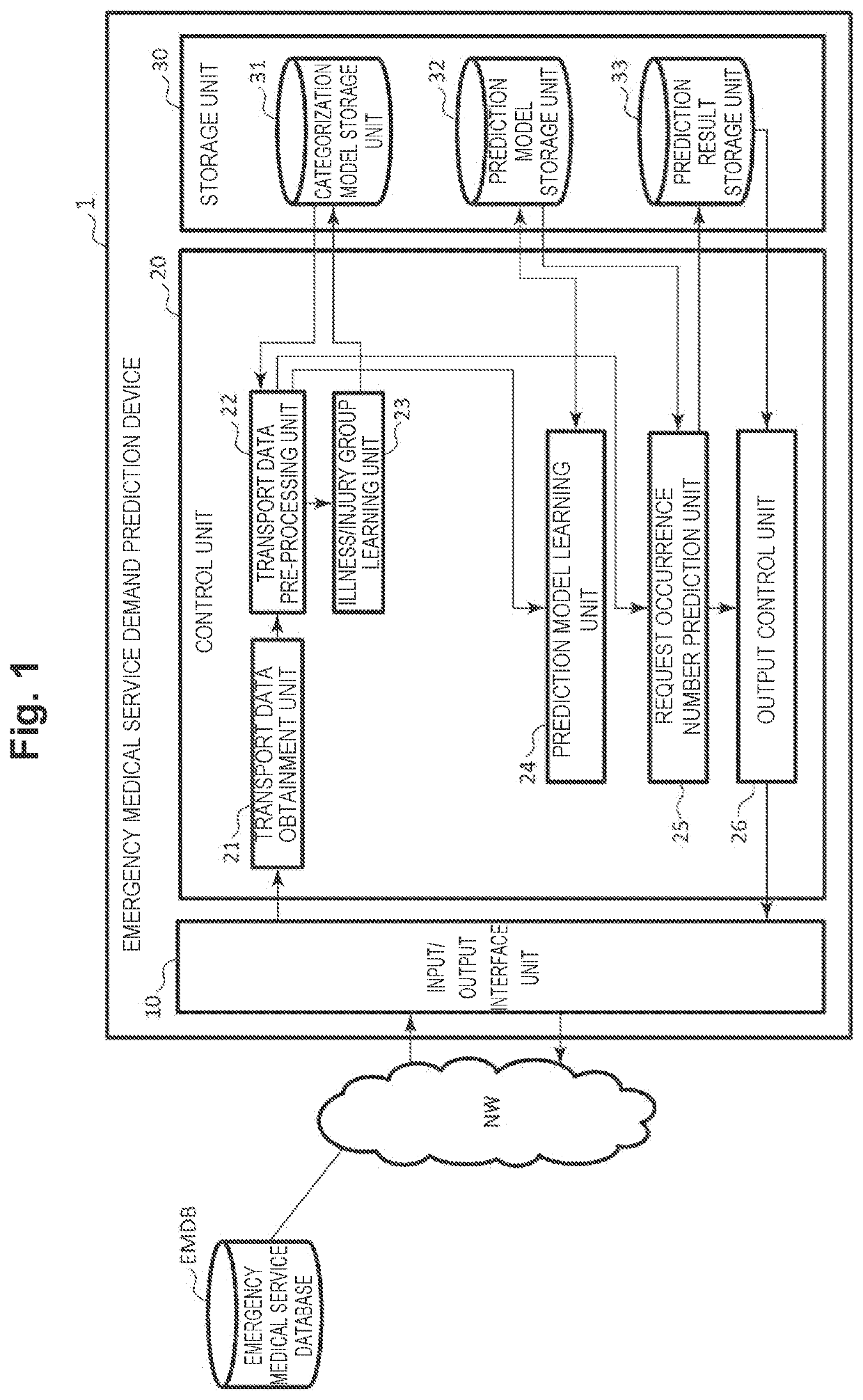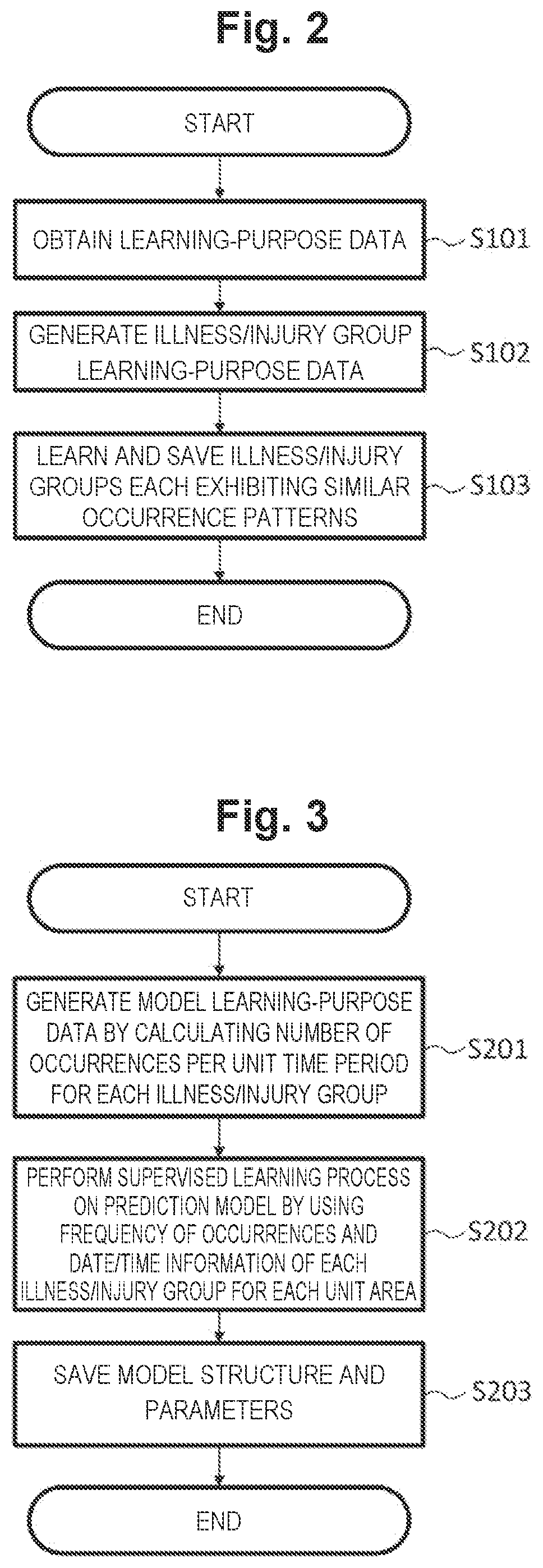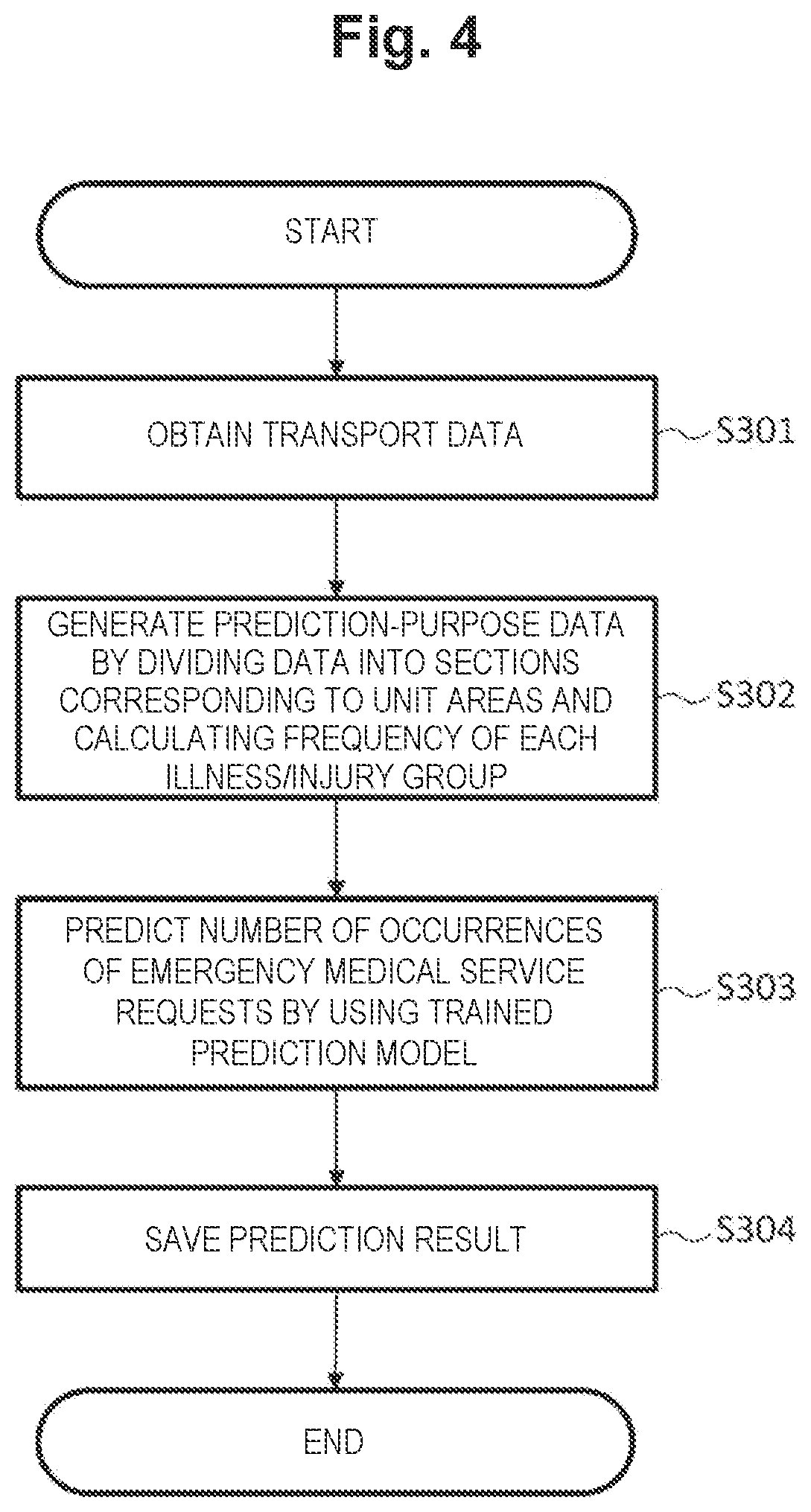Emergency demand prediction device, emergency demand prediction method, and program
a technology for emergency medical services and forecasting devices, applied in the field of emergency medical service forecasting devices, emergency medical service forecasting methods, and programs, can solve the problems of increasing the working period of dispatched emergency medical staff, affecting the safety of emergency medical personnel, etc., to achieve excellent level of precision, high reliability, and efficient utilization
- Summary
- Abstract
- Description
- Claims
- Application Information
AI Technical Summary
Benefits of technology
Problems solved by technology
Method used
Image
Examples
first embodiment example
[0054]
[0055]FIG. 1 is a block diagram showing a functional configuration of an emergency medical service demand prediction device 1 according to an embodiment of the present invention.
[0056]The emergency medical service demand prediction device 1 is managed by the fire department headquarter of each municipality, for example, and is configured to estimate the number of occurrences of emergency medical service per unit time period per unit area, for a number of hours or days later, by using the number of occurrences of emergency medical service requests per unit area in the past as training data. The emergency medical service demand prediction device 1 may be configured by using a server computer or a personal computer, for example.
[0057]The emergency medical service demand prediction device 1 is capable of communicating with various types of servers and databases such as an emergency medical service database EMDB, via a network NW. For example, the emergency medical service database...
second embodiment example
[0113]In a second embodiment example, the emergency medical service demand prediction device 1 according to an embodiment of the present invention is further configured to use environment data indicating information about environments of the places of occurrences of the emergency medical service requests, for the learning and predicting processes.
[0114]FIG. 9 is a block diagram showing a functional configuration of the emergency medical service demand prediction device 1 according to the second embodiment example. In FIG. 9, some of the constituent elements that are the same as those in FIG. 1 are referred to by using the same reference characters, and detail explanations thereof will be omitted.
[0115]In comparison to the device shown in FIG. 1, the emergency medical service demand prediction device 1 in FIG. 9 further includes, within the control unit 20, an environment data obtainment unit 221 and an environment data pre-processing unit 222. Further, in addition to with the emerge...
third embodiment example
[0120]In a third embodiment example, the emergency medical service demand prediction device 1 according to an embodiment of the present invention is further configured to use region data including regional statistic information of the places of occurrences of the emergency medical service requests, for the learning and predicting processes.
[0121]FIG. 12 is a block diagram showing a functional configuration of the emergency medical service demand prediction device 1 according to the third embodiment example. In FIG. 12, some of the constituent elements that are the same as those in FIG. 1 or FIG. 9 are referred to by using the same reference characters, and detail explanations thereof will be omitted.
[0122]In comparison to the device shown in FIG. 9, the emergency medical service demand prediction device 1 in FIG. 12 further includes, within the control unit 20, a region data obtainment unit 321 and a region data pre-processing unit 322. Further, in addition to with the emergency med...
PUM
 Login to View More
Login to View More Abstract
Description
Claims
Application Information
 Login to View More
Login to View More - R&D
- Intellectual Property
- Life Sciences
- Materials
- Tech Scout
- Unparalleled Data Quality
- Higher Quality Content
- 60% Fewer Hallucinations
Browse by: Latest US Patents, China's latest patents, Technical Efficacy Thesaurus, Application Domain, Technology Topic, Popular Technical Reports.
© 2025 PatSnap. All rights reserved.Legal|Privacy policy|Modern Slavery Act Transparency Statement|Sitemap|About US| Contact US: help@patsnap.com



